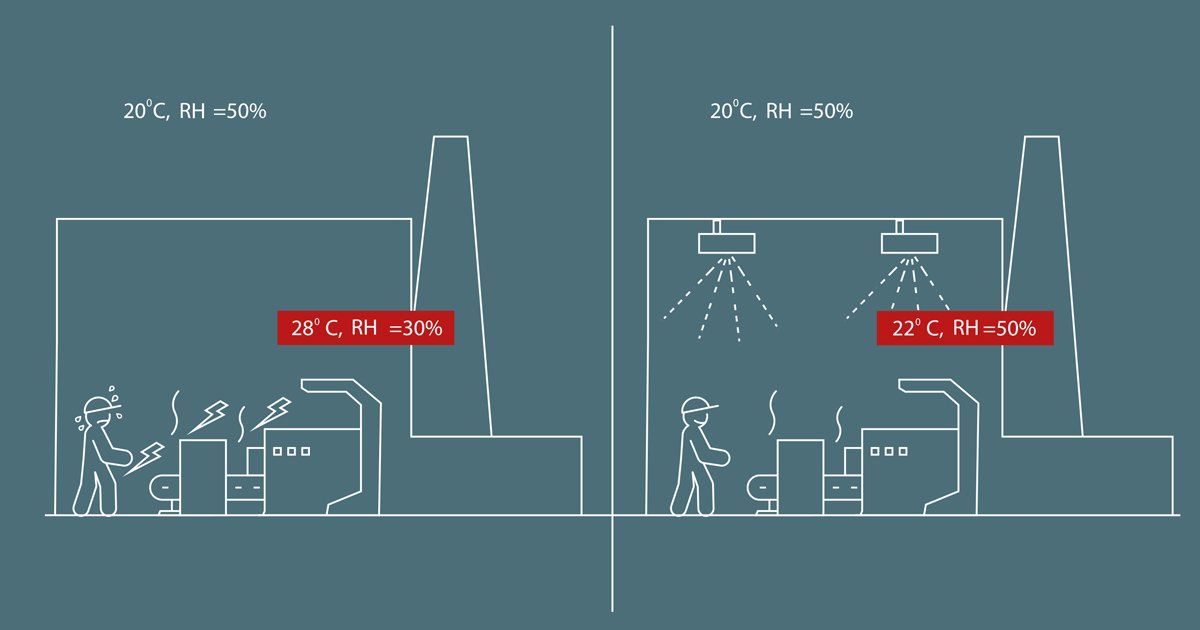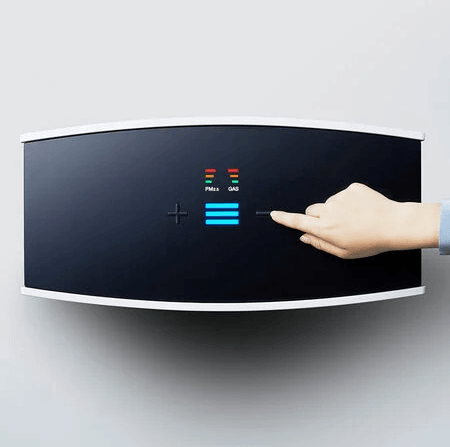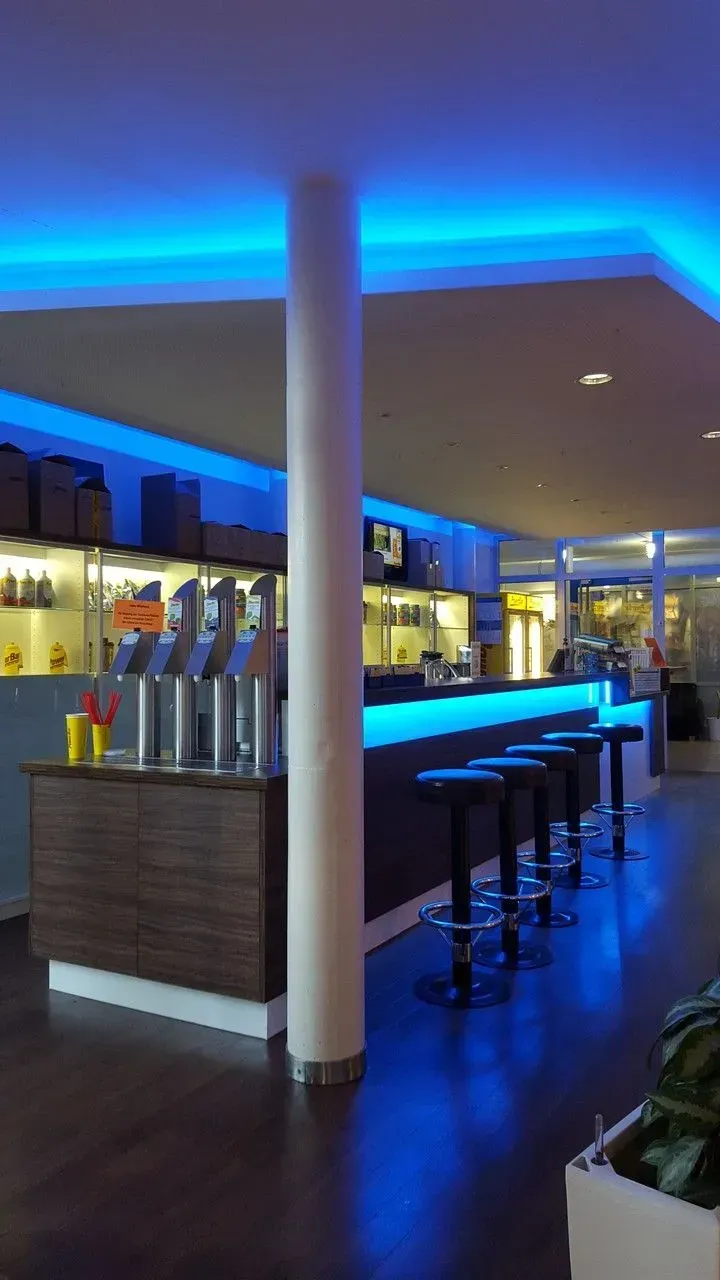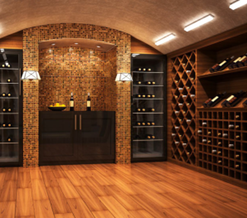Adiabatic Cooling - Kuehlung

It is a fact of nature that changes in the state of aggregation consume energy - for example, when liquid water is turned into steam, the energy required causes the ambient temperature to drop.
This is why sweat cools our skin and why a humidification system can lower the temperature in a room. This effect - evaporative cooling - is very energy-efficient and a good solution for removing waste heat. In this way, you can use the evaporation effect to create a more productive environment in a manufacturing plant.
Industrial plants generate a lot of process waste heat. This not only raises the ambient temperature, but also influences the relative humidity, with all the negative side effects: risk of electrostatic discharge, drying out of the products, impaired well-being of employees and less control over the production processes.
By evaporating water with the help of an air humidification system, these side effects can be reduced or completely eliminated - and the evaporation effect through the introduction of atomized water into a warm room also ensures an energy-efficient cooling effect.
How to convert 2 watts of electrical energy into 630 watts of cooling power.
A cold water humidification system can produce a significant cooling effect with very little energy. The evaporation of the water causes the entire system to degrade energy through the adiabatic process described below - the science behind this is very complex, but the effect is measurable and predictable.
The cooling effect of evaporating water is approx. 630 watts of cooling capacity per kilogram of evaporated water - and for every kilogram of water with an Airtec® high-pressure air humidification system an energy consumption of around two watts is required. In other words: By using a natural process, evaporative cooling is a very energy-efficient method for cooling rooms and production facilities with local heat sources.
This energy efficiency results from the fact that, in contrast to conventional air conditioning systems, evaporative cooling takes place naturally and does not require compressors or other energy-consuming components.
The basics of the adiabatic effect
The adiabatic effect results from the first law of thermodynamics, which states that energy does not go away from a closed system, but only goes somewhere. In other words: In the adiabatic process, energy is transferred through work and not through heat. For example, a gas becomes hotter when it is compressed and cooler when it expands.
An example of an adiabatic process is a piston operating in a completely isolated cylinder. Because of the insulation, the cylinder does not lose any heat while the piston is working (i.e. moving).
When heat is added to a system, only two things can happen: the internal energy of the system increases or the system works. All of the thermal energy has to go into these two things.
Adiabatic Cooling - Kuehlüng
In the case of a production plant (as shown in the figure), heat is supplied to the room by the machines present. In other words, the internal energy of the system increases. To eliminate them, you can either blow in cold air - or you can force the heat to dissipate its energy through the adiabatic effect, which causes the temperature to drop.
If you want to delve into the basics of an adiabatic process, Wikipedia has an excellent scientific definition here >>
Humidifiers can provide a cooling effect in two very different ways - by evaporation or by adding spray to the air stream. Both cool the air through the adiabatic effect described above - with evaporation providing 630 watts of cooling effect per kilogram of water. However, the cooling effect of water on the ground or in the air is negligible.
Humidifiers are usually installed in a duct or AHU or in room air systems where evaporators or atomizers locally emit water vapor.
In general, direct air humidification systems are more efficient in utilizing the adiabatic effect and dissipate the excess heat from a production environment more effectively.
The systems are also suitable for the energetic pre-cooling of cooling towers to reduce energy consumption and increase the cooling properties, as well as for cooling greenhouses and for humidifying and cooling in botanical or zoological gardens.
Adiabatic Cooling - Kuehlung
Adiabatic Cooling-Adiabate kuehlung











